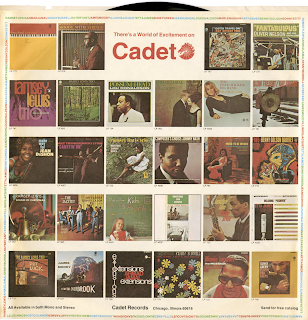Martians Come Back!
Shorty Rogers & His Giants
Cover Photo: William Claxton
Cover Design: Burt Goldblatt
Supervisor: Nesuhi Ertegun
Engineer: John Kraus, John Palladino
Recorded during November and December 1955 in Los Angeles
Atlantic Recording Corporation
Atlantic 1232
1956
Available from online vendors so I will not be posting a sample. Presented here to share the cover art.
Personel: Shorty Rogers, Harry Edison, Conte Candoli, Pete Candoli, Don Fagerquist, Bob Enevoldsen, Johnny Graas, Paul Sarmento, Jimmy Giure, Bud Shank, Barny Kessel, Lou Levy, Earl Grey, Pete Cera, Ralph Pena, Leroy Vinnegar, Shelly Manne
Barney Kessel & Shelly Manne appear by arrangement with Contemporary Records. Bud Shank appears by arrangement with Pacific Jazz Records.
From Billboard - August 18, 1956:
Here's an interesting and swinging new disk that features Rogers in a variety of groupings. In only one is the entire nine-man "Giants" crew featured, but there is a lot of satisfying listening in the quintet and septet line-ups as well as the group featuring a four-man trumpet ensemble, backed with rhythm. Solid performers include Candolis, Fagerquist, Kessel, Manne, Edison, Vinegar, Pena and, of course, Rogers himself on trumpet and flugelhorn. A highly commercial jazz package with an imaginative cover worth plenty of display.Martians Come BackBy Shorty Rogers
Shorty Rogers, trumpet; Jimmy Giuffre, clarinet; Low Levy, piano; Ralph Pena, bass; Shelly Manne, drums
Astral AlleyBy Shorty Rogers
Shorty Rogers, Harry Edison, Conte Candoli, Pete Candoli, Don Fagerquist, trumpets; Dark Grey, piano; Ralph Pena, bass; Shelly Manne, drums
Lotus BudBy Shorty Rogers
Shorty Rogers, fluegelhorn; Jimmy Giuffre, clarinet; Lou Levy, piano; Ralph Pena, bass; Shelly Manne, drums
Dickie's DreamBy Count Basie & Lester Young
Shorty Rogers, fluegelhorn, Harry Edison, trumpet; Bud Shank, alto sax; Pete Cera, piano; Leroy Vinnegar, bass, Barney Kessel, guitar; Shelly Manne, drums
PapouchBy Shorty Rogers
Shorty Rogers, fluegelhorn; Jimmy Giuffre, baritone sax; Lou Levy, piano; Ralph Pena, bass; Shelly Manne, drums
Serenade In SweetsBy Shorty Rogers
Same Personael as Astral Alley
PlanetariumBy Shorty Rogers
Shorty Rogers, fluegelhorn; Jimmy Giuffre, tenor sax; Lew Levy, piano; Ralph Pena, bass, Shelly Manne, drums
Chant Of The CosmosBy Short Rogers
Shorty Rogers, trumpet; Jimmy Giuffre, clarinet; Bob Enevoldsen, trombone; Bud Shank, alto sax; Johnny Grass, French horn; Paul Sarmento, tuba; Earl Grey, piano; Ralph Pena, bass; Shelly Manne, drums

















































